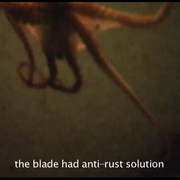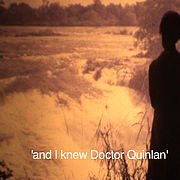This is a True Story
Four short films by Penny Siopis
1997-2012
My Lovely Day combines spliced sequences of 8mm home movies that the artist’s mother shot in the 1950s and 1960s in South Africa to tell a story of displacement and migration. While the narrative ‘voice’ is that of Siopis’ maternal grandmother speaking of her literal and emotional journeys to Greece, England and South Africa in the early part of the 20th century, and to some extent overlooking the apartheid moment from which she speaks, the film has wider resonance as an allegory of globalisation and exile. The sound comprises traditional Greek music and an old 78 rpm record, made in 1955, of Siopis’ mother singing ‘This is my lovely day’. The uneven quality of the found footage dramatises the nature of the film as artifact and resonates with the fragmentary nature of memory.
Obscure White Messenger uses found home-movie footage to tell the story of Dimitrios Tsafendas, who assassinated the South African prime minister and ‘architect of apartheid’, HF Verwoerd, in 1966; it takes its title from a reference to Tsafendas in Nelson Mandela’s autobiography, Long Walk to Freedom. What drove Tsafendas, a man of mixed race, a migrant, working as a parliamentary messenger at the time, to commit this act? Siopis explores the intermingling of madness and political motive evident in transcripts of interviews with Tsafendas. Throughout the film there is the question of who the ‘illegitimate’ Tsafendas is and where he belongs; of what it means to be stateless in a world where citizenship all too often establishes and legitimates what it means to be fully human.
In The Master is Drowning the artist extends her use of found film beyond home movies to historical documentary, combining private and public film sequences to create a story that is both fictive and ‘real’. The narrative unfolds chronologically, culminating in the attempted assassination of the South African Prime Minister HF Verwoerd by David Beresford Pratt, a white liberal businessman and farmer. The attempt occurred in 1960 on the eve of the inauguration of the apartheid South African Republic, and is depicted through the inclusion of actual news footage from that time. Pratt went to the annual Agricultural Show in Johannesburg and shot Verwoerd twice in the face at point blank range following his opening address. Miraculously, Verwoerd survived, and in the ensuing court process Pratt, who suffered from epilepsy, was declared unsound of mind. The words in the video are Pratt’s, drawn from different sources including transcripts of his trial and newspapers of the time.
In Communion the story is about an Irish nun, Sister Aidan, who was also a medical doctor, Elsie Quinlan. She was murdered by a crowd of angry people in the Eastern Cape, who were protesting against apartheid laws during the Defiance Campaign in 1952 in South Africa. Many of the people in the crowd knew and loved Sister Aidan, but she was in the wrong place at the wrong time. In newspaper reports and scholarly articles, questions emerged about ‘common cause’ and culpability – which of the crowd committed the murder? Pathologists could not determine how she died, because parts of her body were missing, some allegedly eaten. Siopis situates Sister Aidan’s ‘voice’ (read as subtitles) in the first person: she narrates her own death, as if from the grave. Contingency is hooked to historical fact through Siopis’ selective use of text in combination with film sequences – anonymous home movies that do not connect in any way to the empirical facts of the story. The sound is an African lullaby.
Handout Penny Siopis_Film Screening
- Handout Penny Siopis Film Screeningpdf(1.2mb)









